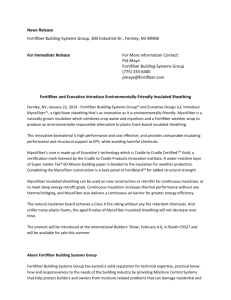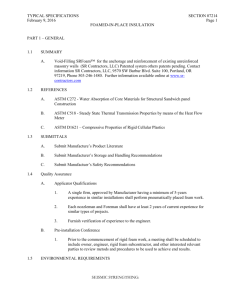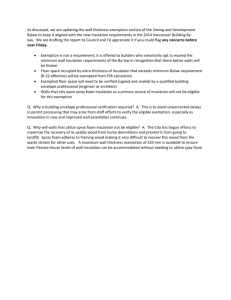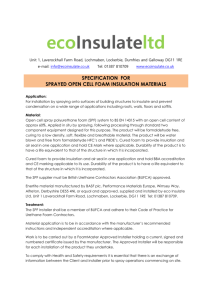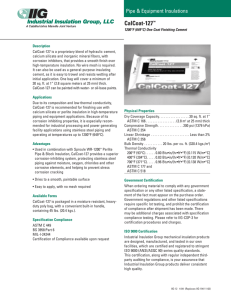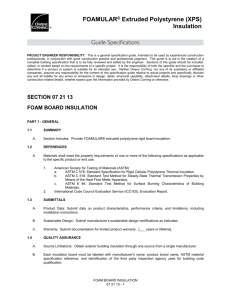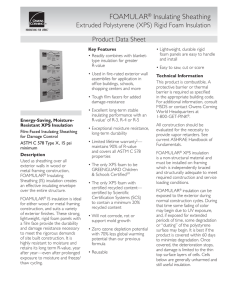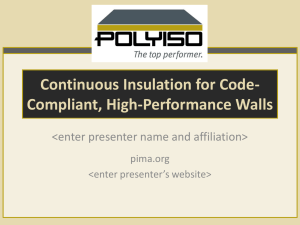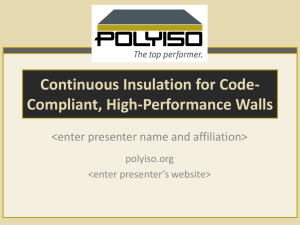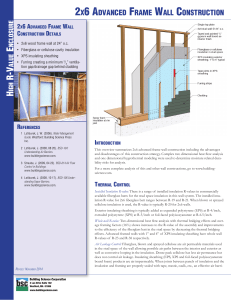PowerPoint
advertisement
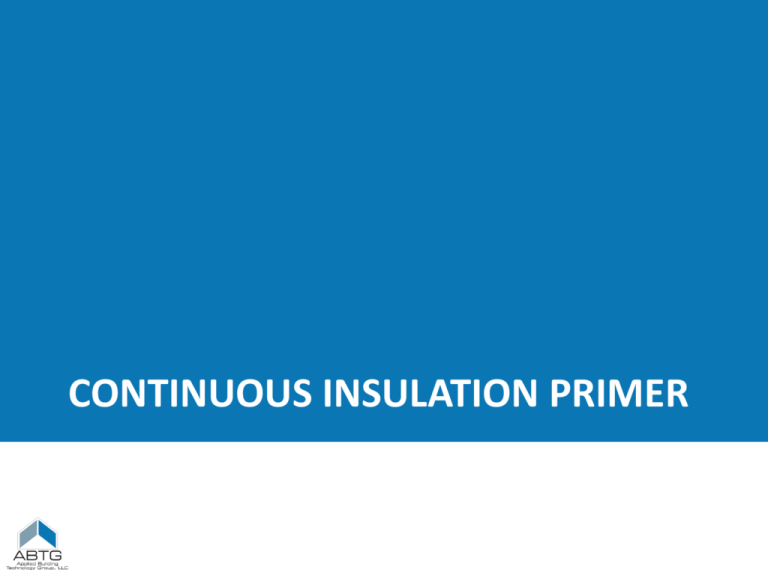
CONTINUOUS INSULATION PRIMER PART 1 – Continuous Insulation • Definition (ASHRAE 90.1) • Applications: Roof, Wall, and Foundations Kinds of Continuous Insulation • Foam Plastic Insulating Sheathing – EPS, XPS, Polyiso • Spray Polyurethane Foam – SPF (closed cell polyurethane) • Others – Rock wool – Fiberglass boards – Fiberboard CI History & Experience • In early 1900’s, solid wood board sheathing was considered as a form of continuous wall insulation (HEW, 1931) (~1.2 R/in) • Cellulosic Fiber Insulating Board (‘Fiberboard’) is a form of continuous insulation in use since the early 1900’s (~2.5 R/in) CI History & Experience • Continuous insulation is not a new concept. Foam plastic insulating sheathing has been successfully used in this application for more than 50 years. – Foam sheathing has been used as continuous insulation for low-slope roofs since the 1940’s (~4-6 R/in) – Wall applications of continuous insulation saw increased interest after the 1970’s oil crisis Role of CI and Various Requirements for Appropriate Use Foam Plastic Insulating Sheathing (FPIS) • Expanded Polystyrene (EPS), ASTM C578 • Extruded Polystyrene (XPS), ASTM C578 • Polyisocyanurate (Polyiso), ASTM C1289 R-value per Inch TABLE 1. Examples of Minimum R-Value Per Inch for Common Types of Continuous Insulation (Foam Sheathing) Continuous Insulation Material Type R-value per Inch of Thickness EPS (ASTM C578, Type II) 4.0 XPS (ASTM C578, Type X) 5.0 Polyiso (ASTM C1289, Type I) 6.0 • Consult with FPIS manufacturer for specific values. • Values shown are representative minimum values. Water Resistance Moisture Sorption Comparison XPS, EPS, and Polyiso all have a lower tendency to adsorb moisture than many other common building materials. Durability • Foam Plastic Insulating Sheathing (FPIS) – Does not rot, decay or corrode – Not food for termites – Can be used to protect moisture sensitive sheathing and framing materials • Other wall sheathing – May be prone to moisture damage without adequate protection Wall Applications • Adaptable to a variety of exterior wall construction types, cladding types, and building types Wall Functions of CI • • • • Continuous Thermal Insulation (CI) Water Resistive Barrier (WRB) Air Barrier (AB) Water Vapor Control (WVC) – The code compliant application of the above functions will be covered later in this presentation Going beyond minimum code with CI • • • • Zero Energy WRB AB WVC Building Science Corporation NIST Net Zero Energy Research Home Topical Resources for Parts 2 & 3 Topic Resource (link) U-factor http://appliedbuildingtech.com/calculator.html Fire TER No. 1202-01, TER No. 1202-03, TER No. 1202-04 Bracing TER No. 1410-07 (not online yet) Air Barrier TER No. 1410-06 WRB TER No. 1410-05 Vapor Control TER No. 1309-02 (not online yet) Wind Pressure ANSI/SBCA FS100-12 Detailing TER No. 1205-05 Air-space Rvalue Tech Matters - Energy Code Compliance: Thermal Resistance of Air Spaces Behind Exterior Wall Coverings Termites Tech Matters – Analysis of and Recommended Actions for Termite Related Code Change Proposals for the 2012 IBC & IRC Vinyl Siding Over Foam TER No. 1006-01 (pending updates)
